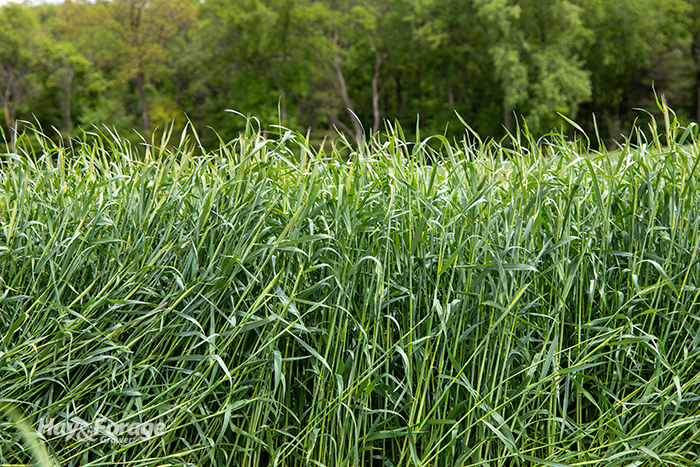
The U.S. drought monitor is virtually clear across the eastern half of the country thanks to ample rain. What the map doesn’t show are the negative effects excessively wet forecasts have had on hay production. In addition to struggling to find a rain-free window to cut hay, many farmers are putting up low-quality forage.
According to Tom Kilcer, planting a winter annual could make up for this lack of forage quality. In a recent issue of Crop Soil News, the owner of Advanced Ag Systems, an agronomy consulting and research business, suggests triticale is a viable winter annual option to seed after corn silage harvest.
“We prefer triticale over cereal rye as it stands much better and allows for harvest almost as early,” Kilcer writes. He adds that applying nitrogen can significantly boost forage yields. Moreover, when farmers seed triticale after corn silage harvest, their total yield per acre can improve by 35% across both crops.
Triticale also provides cover crop benefits like reduced erosion from ground cover and continuous living roots. Kilcer notes these roots capture soil nutrients that would otherwise run off and cause water pollution. His research shows that triticale can accumulate and store up to 160 pounds of nitrogen per acre by the end of the growing season.
With that said, Kilcer admits triticale isn’t a silver bullet. For example, cycles of unusually warm weather last winter pulled plants out of dormancy and put them at risk of winterkill when cold temperatures returned. This pattern also made plants susceptible to various diseases. Kilcer notes it was the worst growing season for triticale he has ever seen.
“We have had horrible corn yield years, but we still grow it — the same with winter forage,” he writes. “There are key steps that you can take to protect the crop at a very low cost and minimize the yield loss we experienced.”
Buy certified seed
The first step is to select good seed. “Certified seed is carefully handled to maximize germination and carefully scouted to ensure it is disease-free,” Kilcer writes. He adds that the optimum seeding rate is 100 pounds per acre — research shows there is no yield advantage to planting at a higher rate.
Next, Kilcer recommends treating seed. “In our replicated trials that were planted on time, the treated seed yielded 15% more,” he says. “The lower-yielding, late-planted stands that were treated yielded 28% more than [the late-planted] stands that were untreated.”
Kilcer adds that farmers can reduce plant populations to offset treated seed costs without major yield drag. “You can drop your seeding rate from 100 pounds per acre to 92 pounds per acre and have the same crop if it is planted on time with the same total costs,” he says. However, he contends that buying treated seed and maintaining normal seeding rates has potential to generate the greatest return on investment.
After selecting seed, the biggest yield factor is planting date. September 10 is the latest Kilcer recommends farmers in his region of northern New York plant triticale. For states like Pennsylvania, Ohio, and across the Midwest, that date extends to September 20.
“Further south, such as Tennessee, the first of October is your ‘in-the-ground’ target,” Kilcer suggests. “You are growing winter forage — not a cover crop. Planting date is a key management step.”
Kilcer encourages farmers to fertilizer triticale. According to his New York research, spring yields improved with up to 60 pounds of nitrogen per acre applied in the fall. Tennessee research suggests triticale can benefit from up to 100 pounds of nitrogen per acre at planting.
“Do not wait to spread manure as the nitrogen source before you plant. My research and that from Penn State University agree that the yield loss is greater than the small nitrogen savings,” Kilcer asserts.

